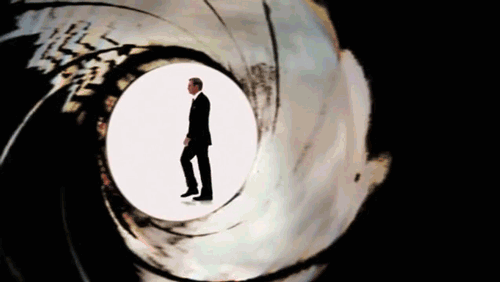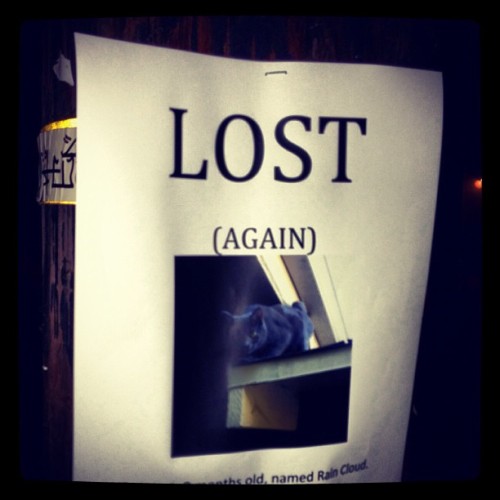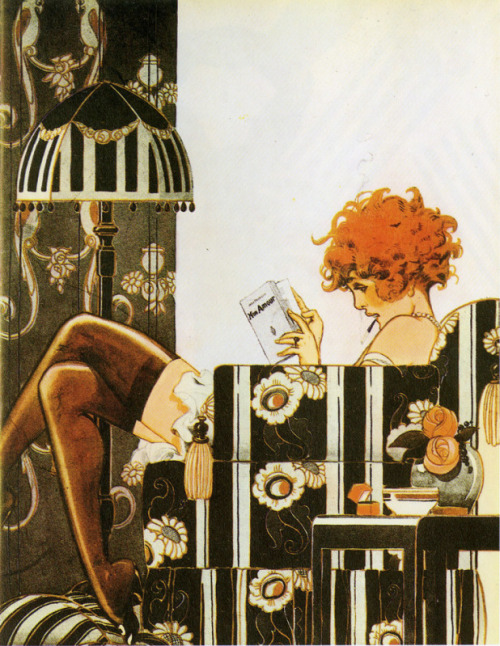All the Bonds down the gun barrel. :

emptysquared:
All the Bonds down the gun barrel.

















La Garçonne at home, 1925. C. Hérouard. Orignally printed in La Vie Parisienne.
Hérouard was a French book illustrator and frequent contributor to the “La Vie Parisienne” magazine devoted to women in text and pictures. This fine “aquarelle” pochoir is quite typical of Herouard’s ornate style.
The pochoir process, characterized by its crisp lines and brilliant colors, produces images that have a freshly printed or wet appearance.
The show is Saturday, November 24th (that’s right after Thanksgiving) at 8:00 pm. Tickets are $12 online, and $15 at the door. Seating is limited, so reserve ahead of time. More info on the Acrobatic Conundrum Facebook page.I am producing a project with a bunch of really amazing artists…and I think that you would enjoy seeing our show: “The Acrobatic Conundrum Vol. 1″
The Acrobatic Conundrum is a series of shows dedicated to presenting original, extraordinary circus acts. In volume 1, these artists dare to perform by their own rules during an evening of story, risk, exploration into the possibilities of circus performance. The show will feature unique work from established and up-and-coming Seattle area acrobats. Human vulnerability belies superhuman talent, as they flip, spin, and tumble towards a new tradition of expressive, vital circus.
Performances by: Wendy Allen, Una Bennett, Tanya Brno, Terry Crane, Emma Curtiss, Sol Doran, Tom Hanna, Nick Harden, Nick Lowery, Kari Podgorski, Jonathan Rose, Erica Swift, Jacki Ward
The game's true origins, however, go unmentioned in the official literature. Three decades before Darrow's patent, in 1903, a Maryland actress named Lizzie Magie created a proto-Monopoly as a tool for teaching the philosophy of Henry George, a nineteenth-century writer who had popularized the notion that no single person could claim to "own" land. In his book Progress and Poverty (1879), George called private land ownership an "erroneous and destructive principle" and argued that land should be held in common, with members of society acting collectively as "the general landlord."
Magie called her invention The Landlord's Game, and when it was released in 1906 it looked remarkably similar to what we know today as Monopoly.
The game's most expensive properties to buy, and those most remunerative to own, were New York City's Broadway, Fifth Avenue, and Wall Street. In place of Monopoly's "Go!" was a box marked "Labor Upon Mother Earth Produces Wages." The Landlord Game's chief entertainment was the same as in Monopoly: competitors were to be saddled with debt and ultimately reduced to financial ruin, and only one person, the supermonopolist, would stand tall in the end. The players could, however, vote to do something not officially allowed in Monopoly: cooperate. Under this alternative rule set, they would pay land rent not to a property's title holder but into a common pot-the rent effectively socialized so that, as Magie later wrote, "Prosperity is achieved."

